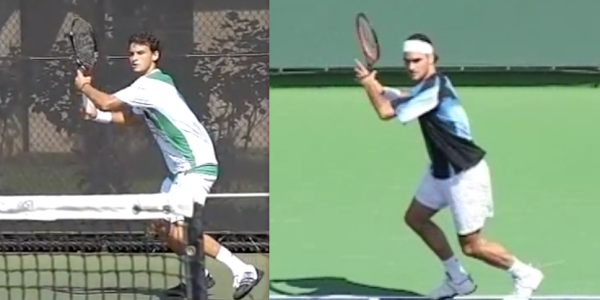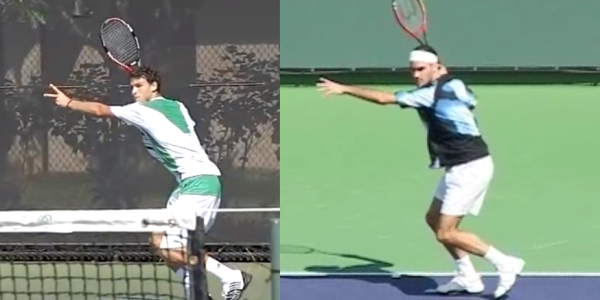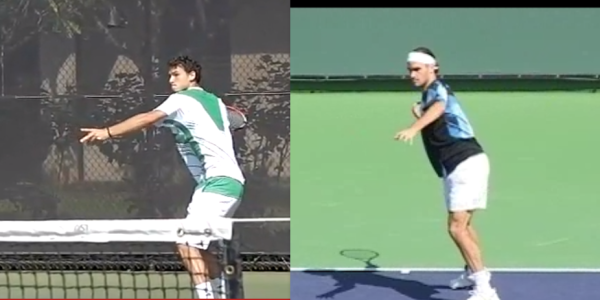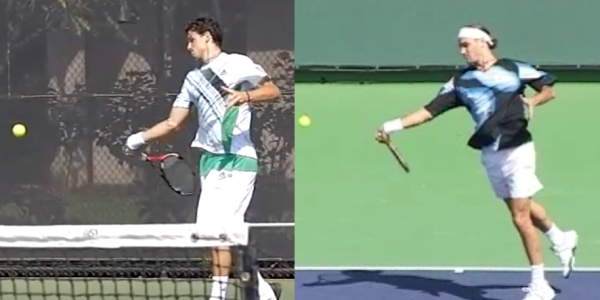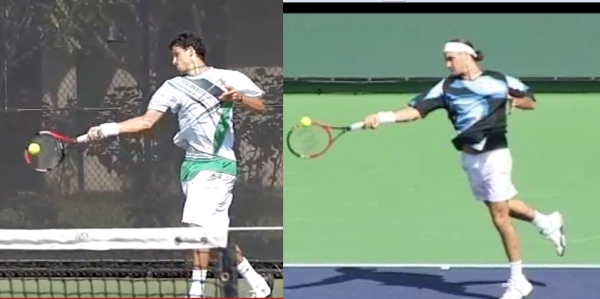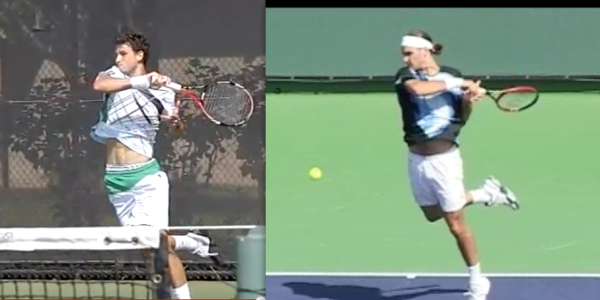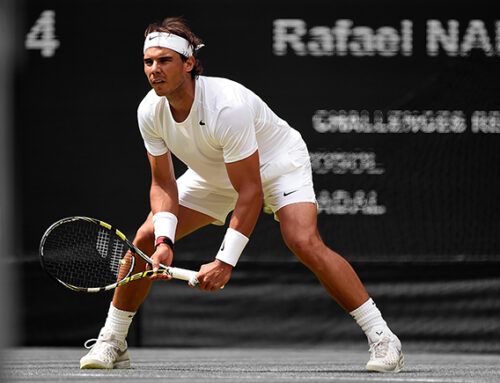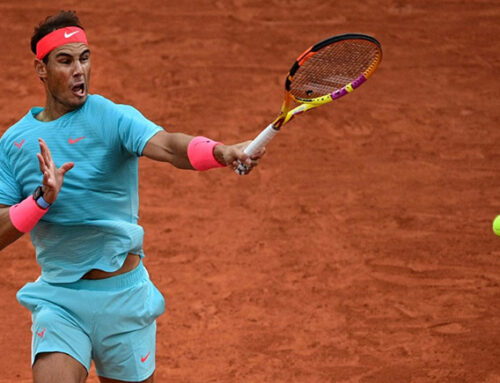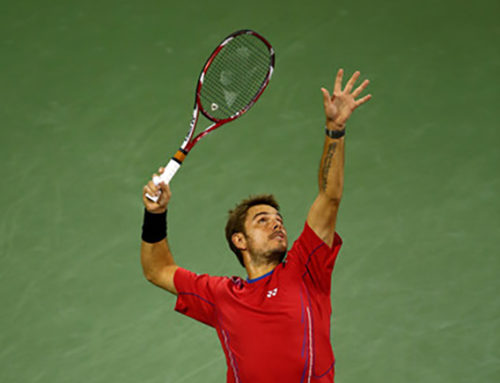As Federer’s career slowly but inexorably approaches its end (emphasis on the word ‘slowly’ given his strong 2012 and positive start to 2013), tennis fans around the world have been anxiously awaiting the arrival of a player from the next generation with a similar sense of style and artistry as the Swiss Maestro. While youngsters such as Bernard Tomic and Ricardis Berankis stand apart from the rank upon rank of defensive grinders and ‘big serve, big forehand’ players, there is consistently one name that comes to the fore when the inevitable discussion of Federer’s heir-apparent takes place. Just as Federer was born 10 years after one of his idols, Pete Sampras, Grigor Dimitrov comes 10 years after Federer. Where Federer won his Wimbledon Junior crown in 1998, Dimitrov did so in 2008. If the similarities ended there then there’d be little meat to the article but that is simply the beginning. Dimitrov’s style of play is hauntingly familiar – big forehand, one-handed backhand with a great slice, good serve and volleys and quick movement around the court. But that brief description does little justice to the similarities between their games. Today we will begin a detailed look at the similarities, beginning with the forehands.
Dimitrov’s forehand mirrors Federer’s more closely than anyone else on the professional tour. In fact the similarities are so striking it is hard to believe there isn’t intentional imitation at work.
Initial Turn
Both players begin their take-back on the forehand by turning their shoulders and raising both hands together. The left hand is on the throat of the racket, the racket face beginning to rotate outwards. One of the key aspects of this movement is that by raising and twisting both arms outwards together, it helps to initiate the hip and shoulder turn. Taking the right hand by itself doesn’t constrain the shoulders to turn in order to accommodate the second hand. Also worth noting here is the way that the racket heads of both players lean towards to the net slightly rather than being vertical.
Preparation
In this frame we can see the completion of the preparation phase of the forehand. The hands have separated at shoulder height, the right hand continuing backwards while the left extends out parallel to the net at shoulder height. This left hand/arm position helps to maintain the shoulder turn, and the coiling of the upper body which is apparent – both men’s shoulders rotated further clockwise (as viewed from above) than their hips.
The Racket Drop
Keep in mind when you view the image immediately above that the viewing angle is different between the two. What is important here is the angle of the racket face. Compared to the previous image, we can see that the rackets have continued back and down, and closed off in the process such that they are facing essentially towards the ground at this stage in the swing. The weight has been shifted off the right foot in the previous image and is beginning to transfer forwards. Keep on eye on that weight transfer over the next three frames however – it will go completely forward over the left leg prior to contact and stay there until well afterwards.
Forward Acceleration
Now the forward acceleration begins. The racket face which was previously closed and pointing towards the ground begins to open up as the arm sweeps outwards and upwards towards the ball. The hips have opened slightly but will not open any further than this until after contact. As the right arm sweeps out the left tucks at the elbow, pulling in to prevent unbalancing. Notice how the wrist is laid back on both players, and although there is a slight bend to Dimitrov’s arm in this shot, he will also frequently hit with his arm fully extended (just as Federer will sometimes hit with his arm slightly bent also). One other important thing to note is the relationship between the hips and feet. The right foot on both players has begin to kick back behind them, opposite the rotational direction of their arm. This is a counterbalancing movement, designed to anchor the hips in place and prevent them from opening further and in doing so robbing the shot of both power and stability.
Contact
This is a natural continuation of the previous frame. The left legs have extended even further, keeping the hips in place. The right arm is extended now to a point of contact far from the body. The left arm has tucked completely and will remain there until after the shot is completed.
Follow Through
And now we reach the follow-through. Again note that the hips have not moved appreciably from two images ago prior to contact. The left arm remains tucked for both players, the hand finishing on the outside of the shoulder. Two minute differences may stand out. The first is Federer’s vision locked on the point of contact even though the ball has left – meanwhile Dimitrov is already tracking the ball. The second is the slight difference in racket face angles at the completion of the follow-through. Federer has closed his racket face more, which may partly be a result of the greater topspin he tends to use – Dimitrov favors a flatter ball than Federer off the forehand wing most of the time.
Conclusion
The similarities are nothing short of amazing. Typically when two strokes look very similar in breaking it down frame-by-frame the differences really come out – in real-time it is difficult for the naked eye to pick out the changes. In this instance the shots look even more similar broken down than they do in live play. In truth this probably comes down to movement more than anything. Although Dimitrov is quick on his feet, he lacks the smoothness of Federer’s movement. Dimitrov is hustle to Federer’s flow. From the moment the feet are set however the technical details of their forehands are strikingly identical. As mentioned above, Federer favors a heavier ball whereas Dimitrov seems content with a slightly flatter shot. However at least where their forehands are concerned, Dimitrov has truly earned the nickname “Baby Fed”.
